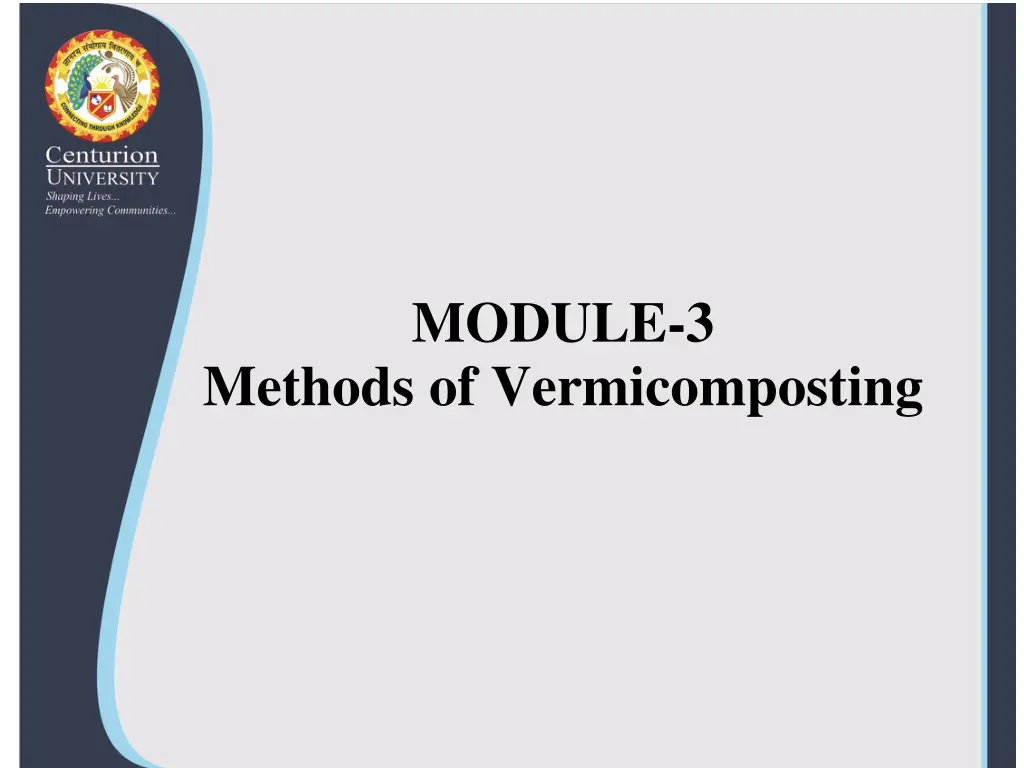
Effective Methods of Vermicomposting for Sustainable Waste Management
Enhance your knowledge on vermicomposting methods including pits, heaps, tanks, and cement rings for efficient biodegradation of organic waste. Discover how the heap method outperforms pit method in biomass production and vermicompost yield.
Download Presentation

Please find below an Image/Link to download the presentation.
The content on the website is provided AS IS for your information and personal use only. It may not be sold, licensed, or shared on other websites without obtaining consent from the author. If you encounter any issues during the download, it is possible that the publisher has removed the file from their server.
You are allowed to download the files provided on this website for personal or commercial use, subject to the condition that they are used lawfully. All files are the property of their respective owners.
The content on the website is provided AS IS for your information and personal use only. It may not be sold, licensed, or shared on other websites without obtaining consent from the author.
E N D
Presentation Transcript
MODULE-3 Methods of Vermicomposting
Methods of Vermicomposting 1.Pits below the ground : Pits made for vermicomposting are 1 m deep and 1.5 m wide. The length varies as required. 2. Heaping above the ground: The waste material is spread on a polythene sheet placed on the ground and then covered with cattle dung. Sunitha et al. (1997) compared the efficacy of pit and heap methods of preparing vermicompost under field conditions.
Considering the biodegradation of wastes as the criterion, the heap method of preparing vermicompost was better than the pit method. Earthworm population was high in the heap method, with a 21-fold increase in Eudrilus eugenae as compared to 17-fold increase in the pit method.
Biomass production was also higher in the heap method (46-fold increase) than in the pit method (31-fold). Consequent production of vermicompost was also higher in the heap method (51 kg) than in the pit method (40 kg).
3. Heap method 4. Tanks above the ground: Tanks made up of different materials such as normal bricks, hollow bricks, shabaz stones, asbestos sheets and locally available rocks were evaluated for vermicompost preparation. Tanks can be constructed with the dimensions suitable for operations.
The tanks with dimensions of 1.5 m (5 feet) width, 4.5 m (15 feet) length and 0.9 m (3 feet) height. The commercial bio digester contains a partition wall with small holes to facilitate easy movement of earthworms from one tank to the other.
5. Cement rings: Vermicompost can also be prepared above the ground by using cement rings). The size of the cement ring should be 90 cm in diameter and 30 cm in height. The details of preparing vermicompost by this method have been described in a later section.
6) Drum method 7) Cement Pits






















